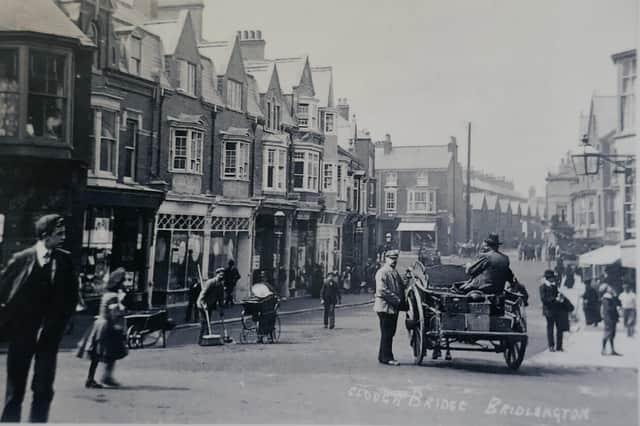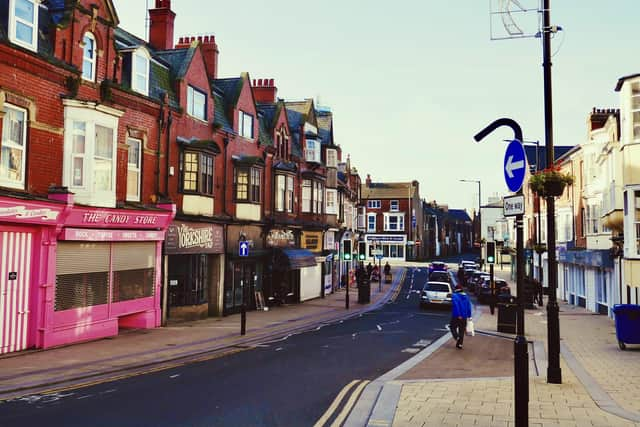The ‘now and then’ column with Aled Jones: Focusing on Bridge Street


This week Mr Jones concentrates on Bridge Street by contrasting a vintage black and white postcard from the early 20th Century with a modern day photograph.
Mr Jones, who owns an extensive collection of vintage Bridlington postcards, said: “This rare vintage postcard shows an early 20th Century view of Bridge Street.
Advertisement
Hide AdAdvertisement
Hide Ad“As you can see, the street appears very much structurally unchanged. I think the only disparities between the two pictures are the fine Edwardian styles on view and the fact there are several horse-drawn carts and carriages plying their trade, this before the car altered things forever.


“Nowadays, of course, it’s not unusual for scores of motor vehicles to pass along Bridge Street in a matter of minutes.
“Bridge Street was once a narrow lane known as Clough Bridge. It was originally the site of an important ancient bridge that probably dated back to Roman times. This bridge was situated at the junction with Hilderthorpe Road and enabled the Gypsey Race to channel down a ravine into the harbour at Clough Hole.
“In 1902, a year after Queen Victoria’s death, Clough Bridge was widened considerably and officially renamed Bridge Street. However, it wasn’t until the late 1990s that Clough Hole was in-filled as part of Bridlington Harbour’s then modernisation programme.
Advertisement
Hide AdAdvertisement
Hide Ad“Bridge Street quickly became Bridlington’s newest business district and many of the Late Victorian and Edwardian shop frontages survive to this day, a classic example can be found at number 18. The thoroughfare was popular with thousands of shoppers both from the local area and further afield, mainly day trippers visiting the resort by steam train from West Yorkshire and the North Midlands.
“Bridge Street has seen its fair share of highly respected businesses, both past and present. Two of the prominent early ones were Henry Musk the fruiterer and Weldon’s boot store.
“Another, from around half a century ago, also particularly stands out, Benson’s photographic studio. This was run from a shop next to the side of the Brunswick Hotel (pictured right) and was owned by Robert Owen, an esteemed Bridlington councillor and mayor. The business specialised in highly popular “walking pictures” expertly captured on the beach and seafront areas, but also took informal shots of folk setting off on boat trips. It meant that gleeful holidaymakers could literally ‘go home on a postcard’ and all for 2/6d!
“The Brunswick, a local landmark, was originally built in the early 19th Century as a coaching inn in the days when horsepower and fortitude ruled the land.”